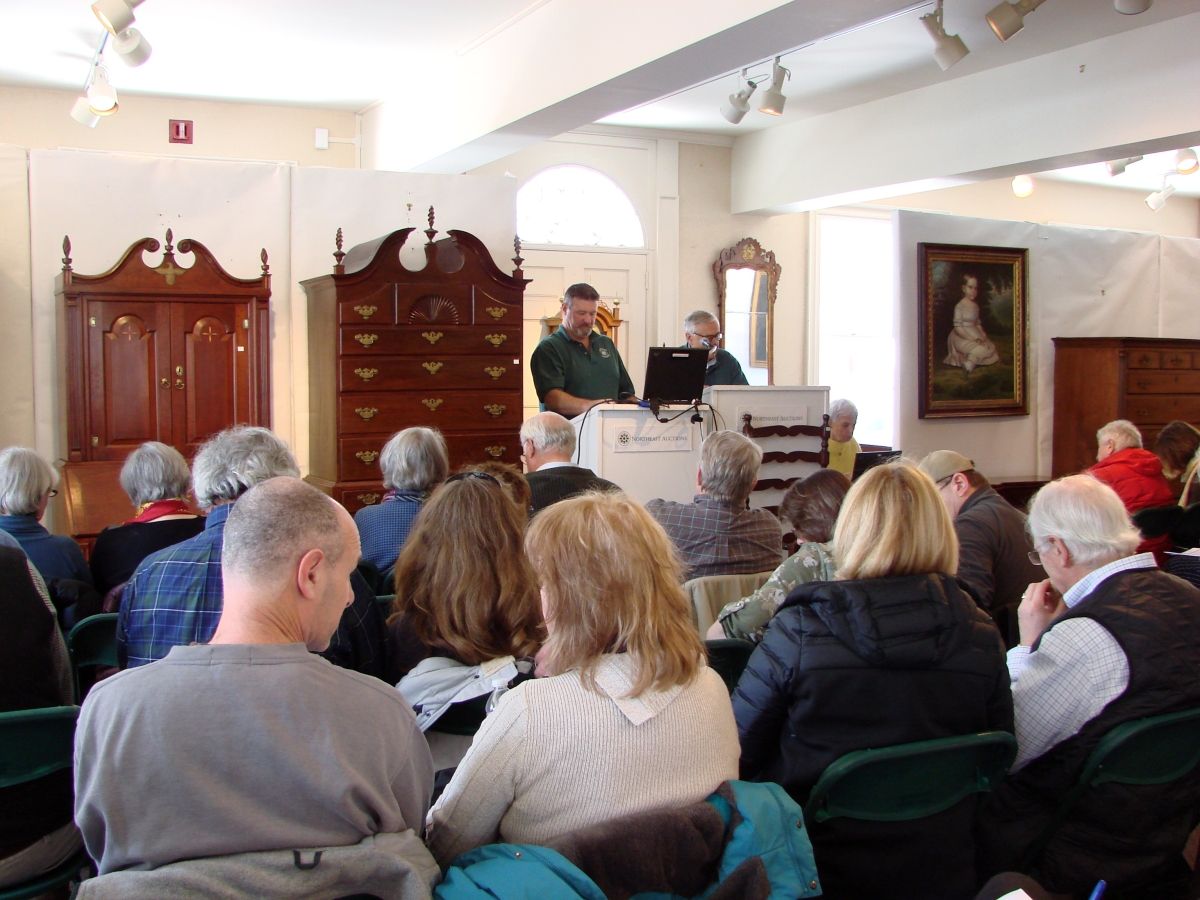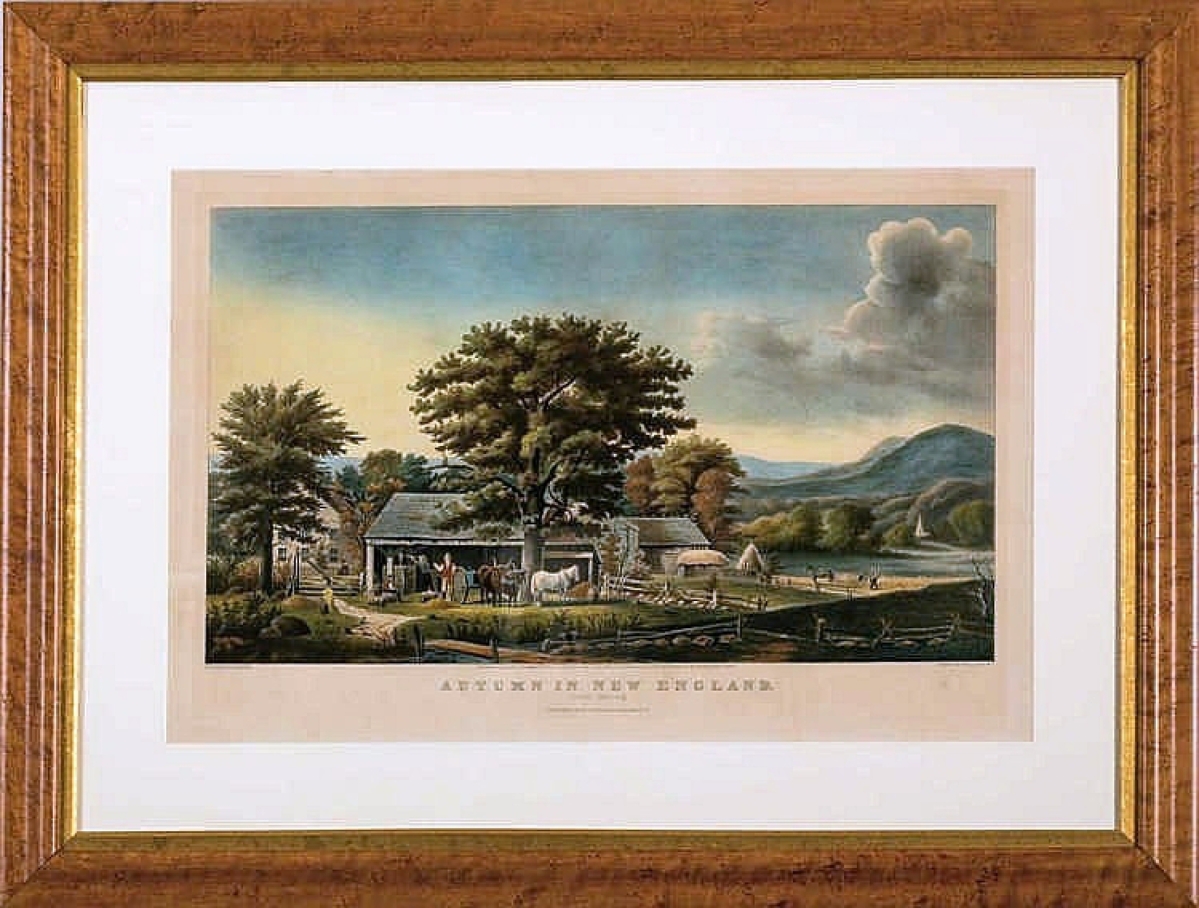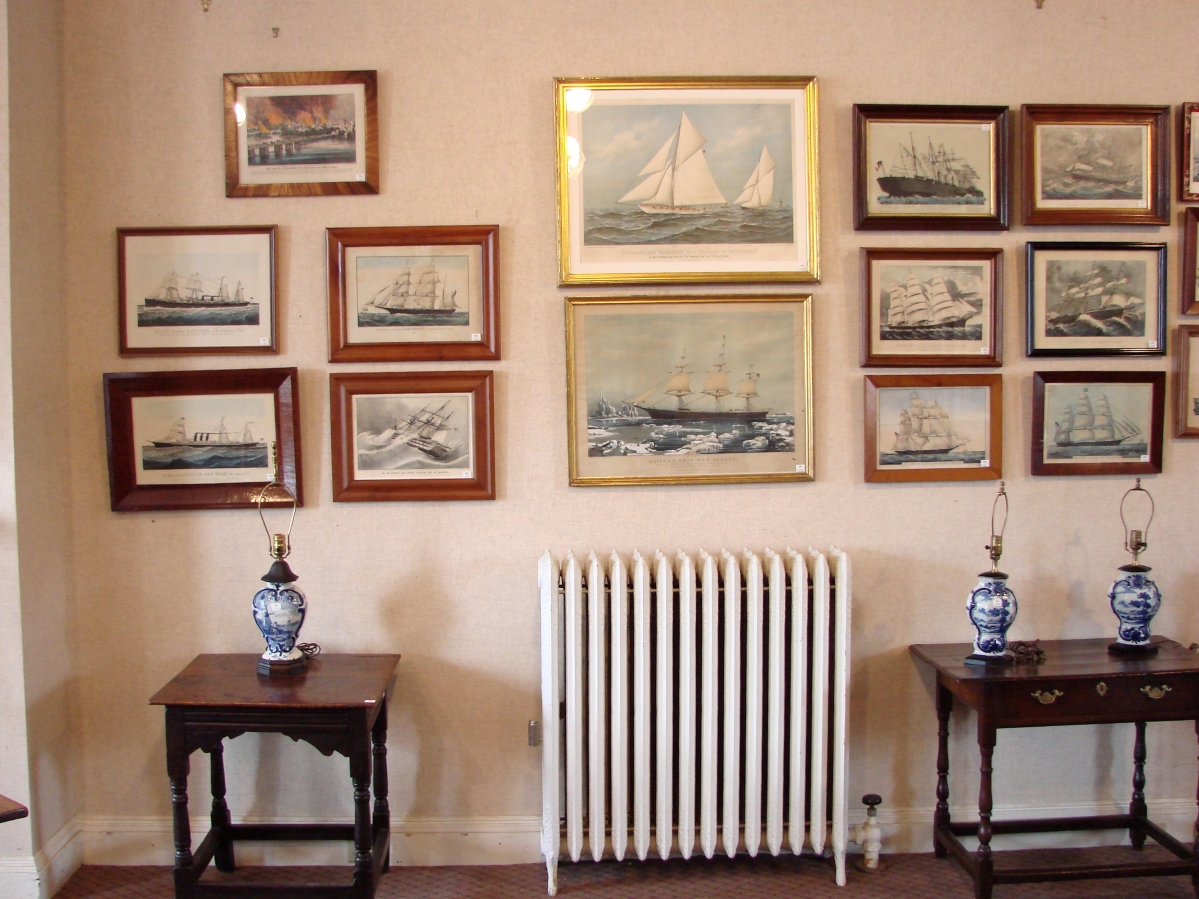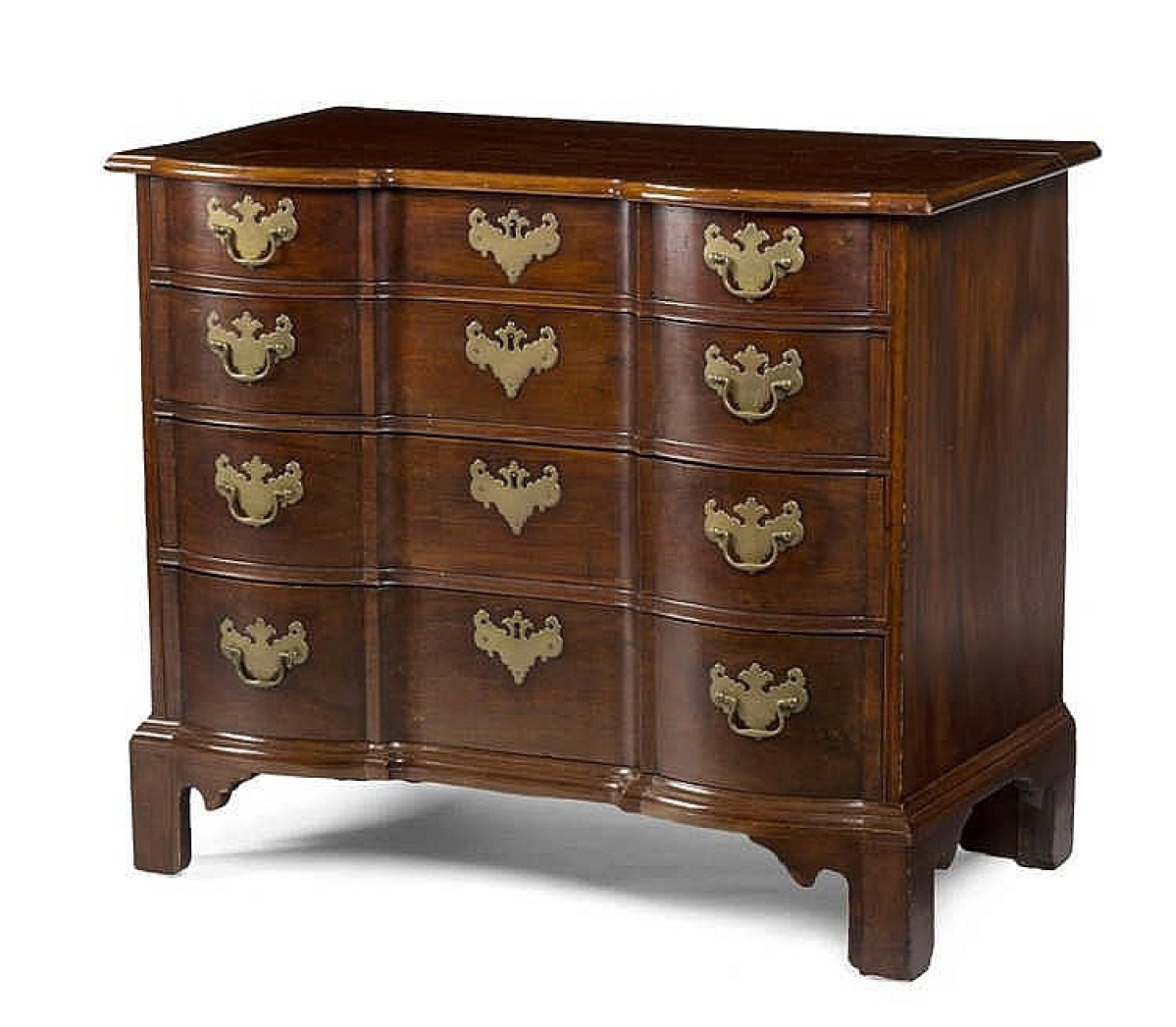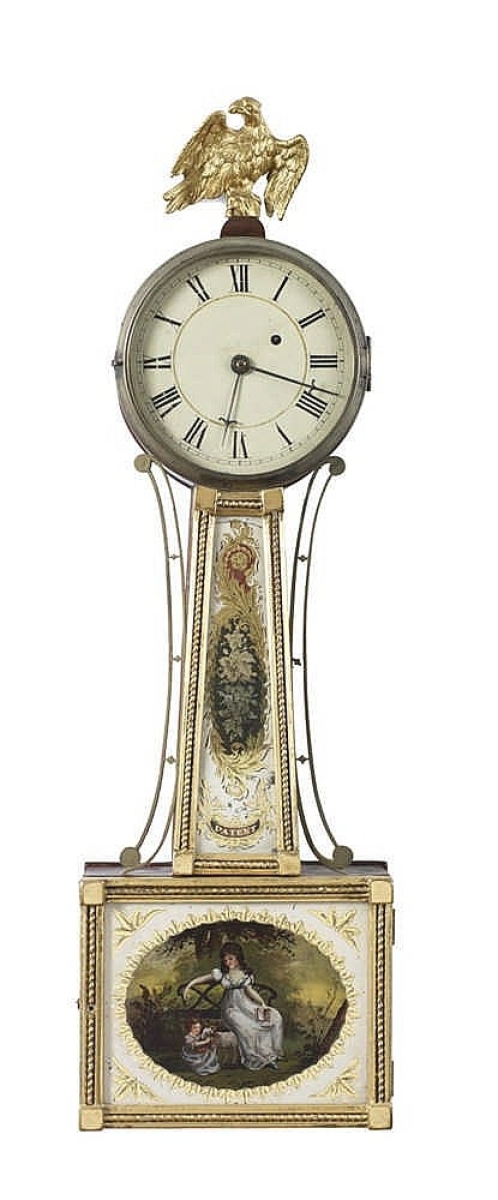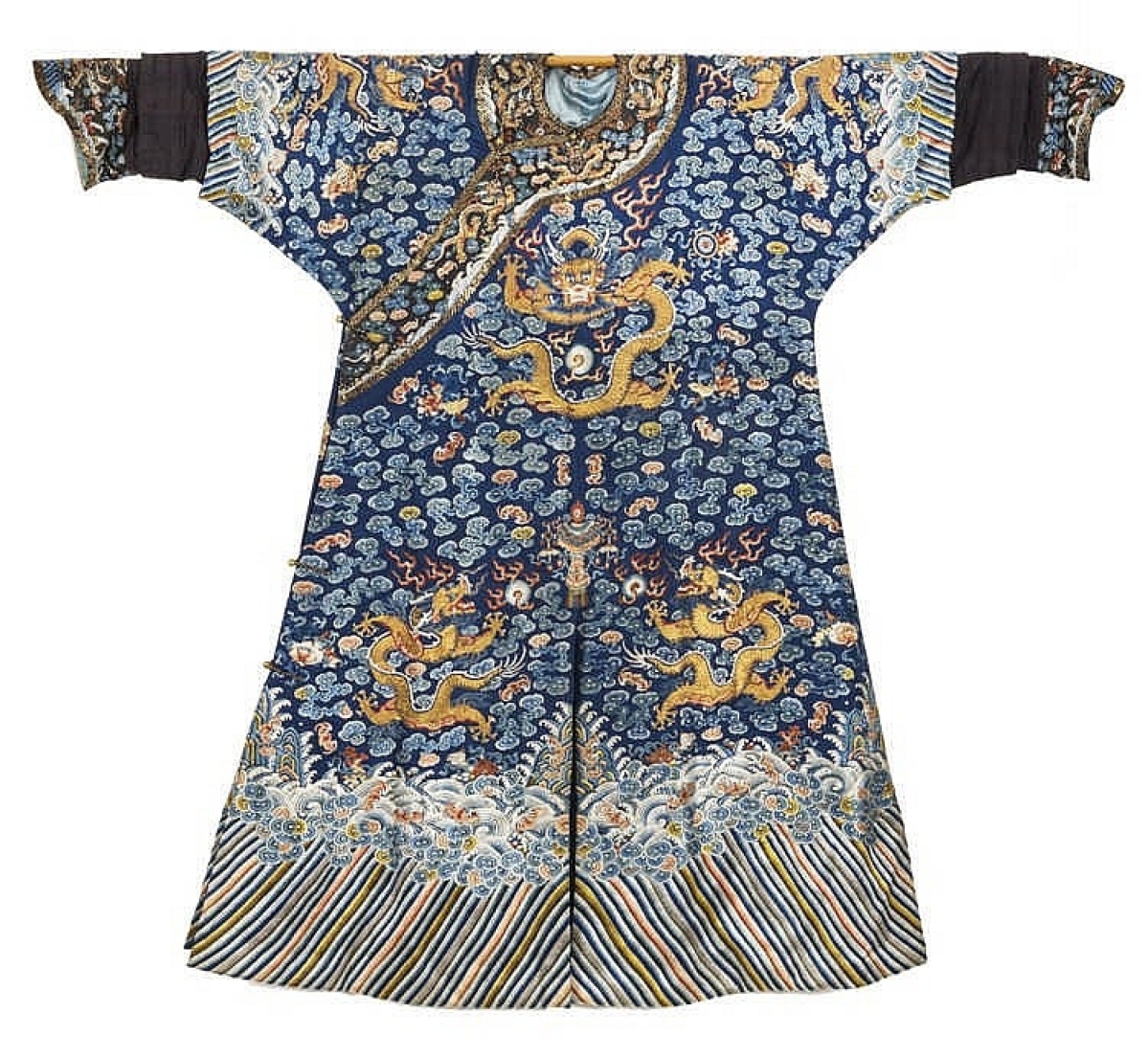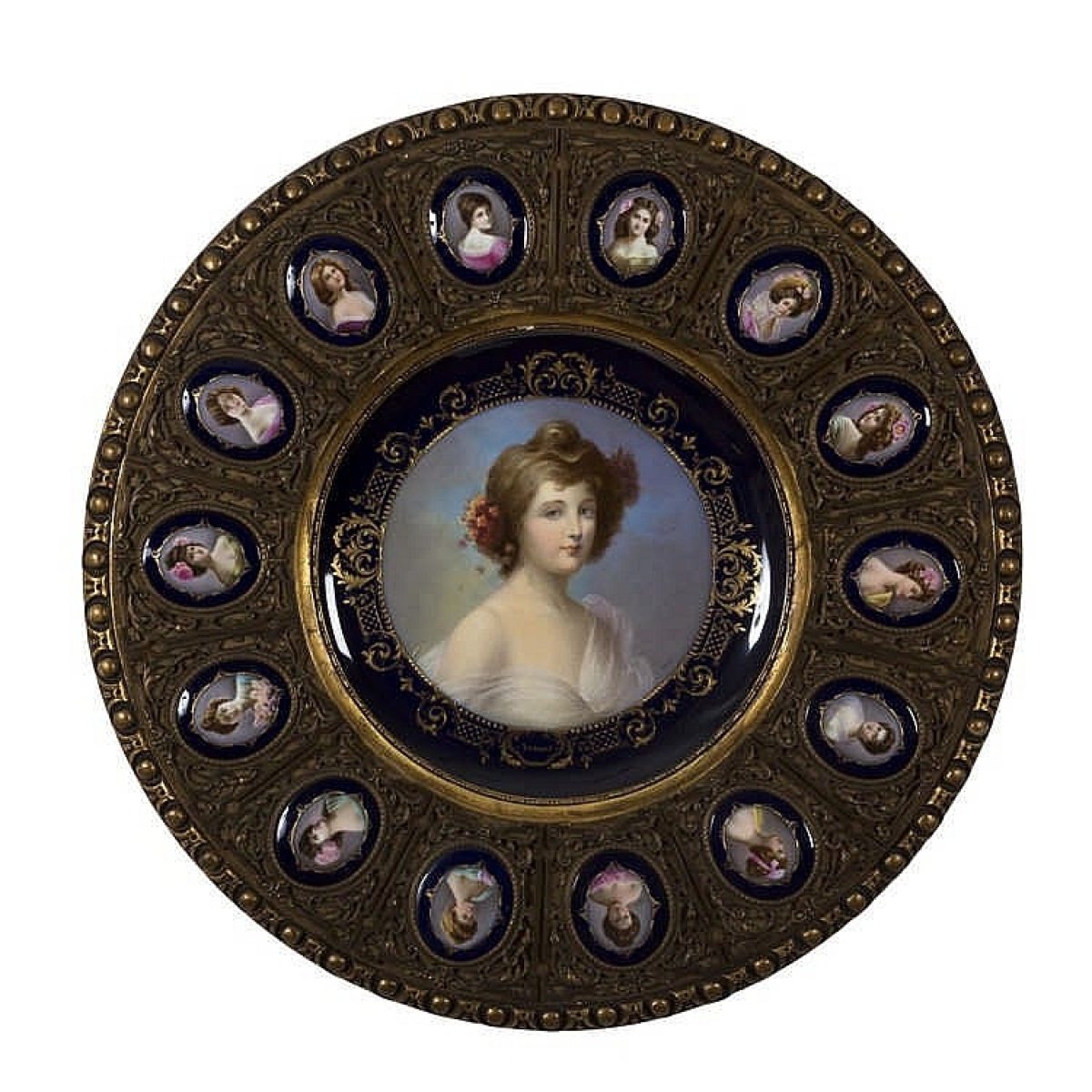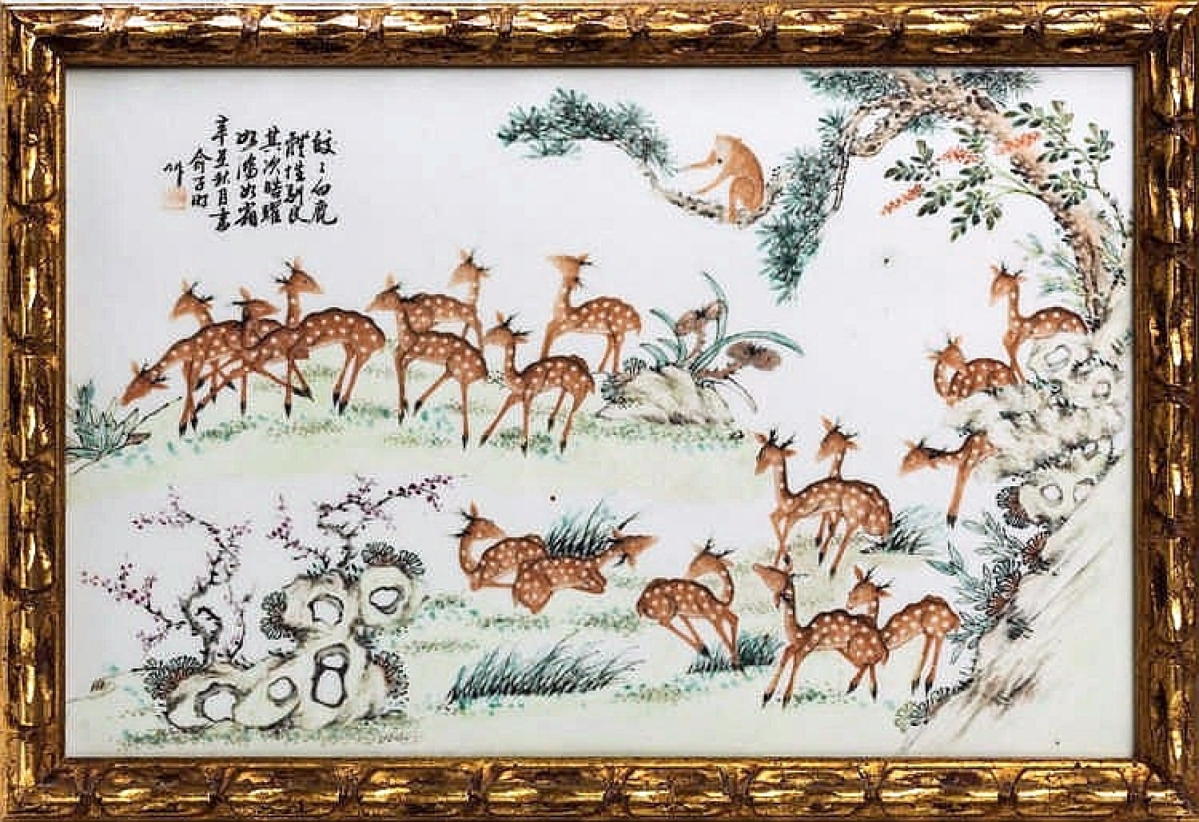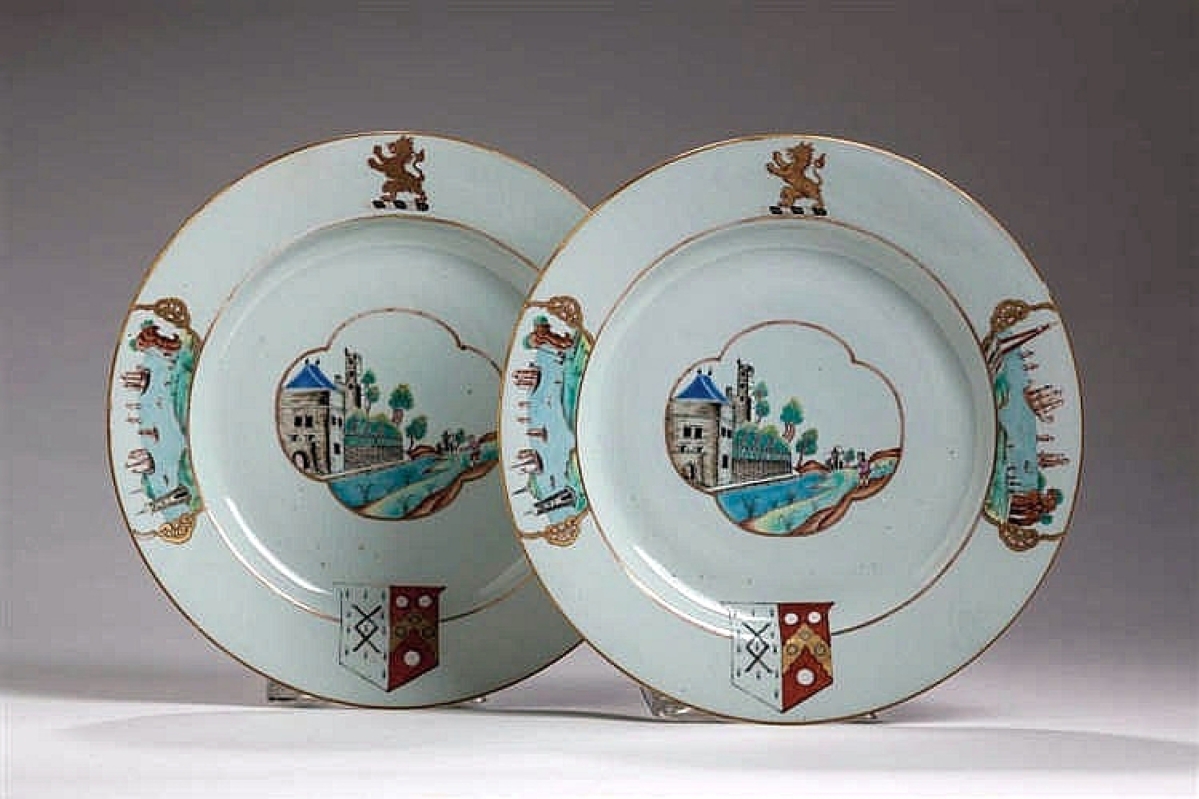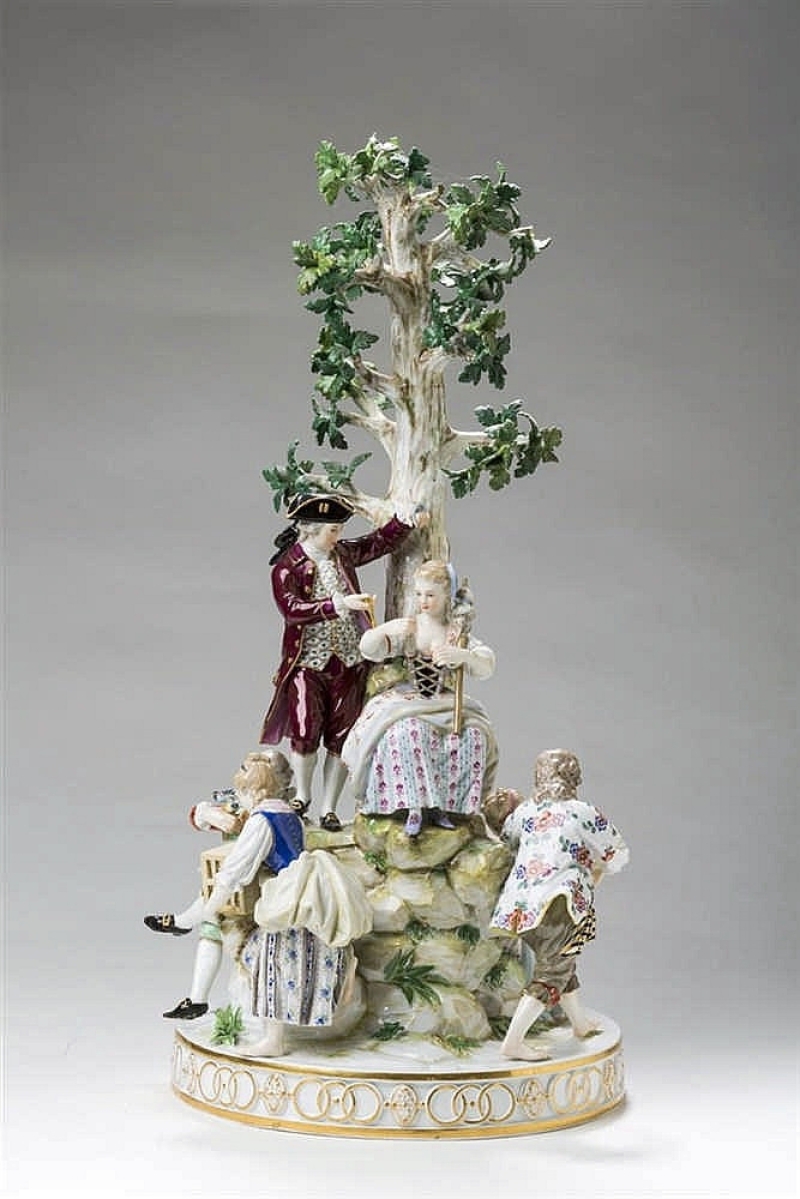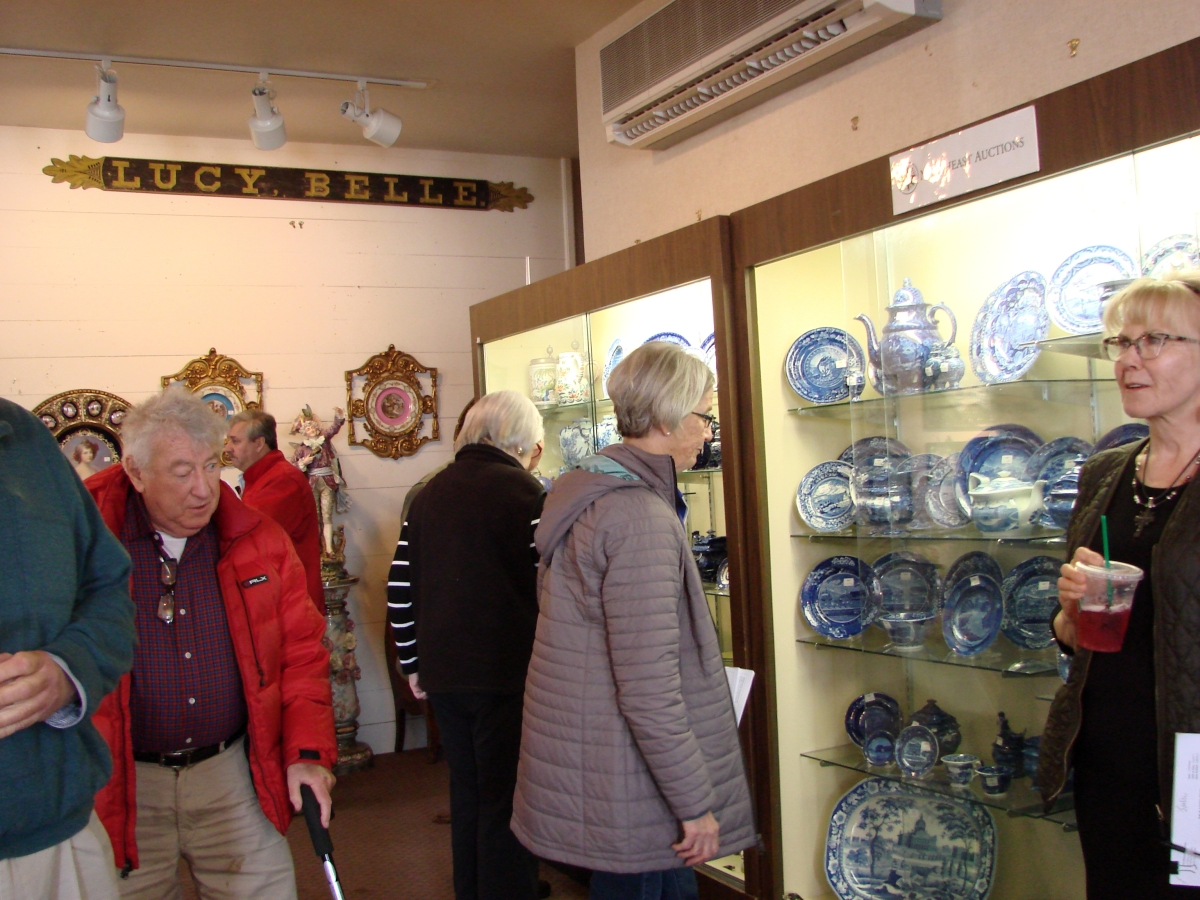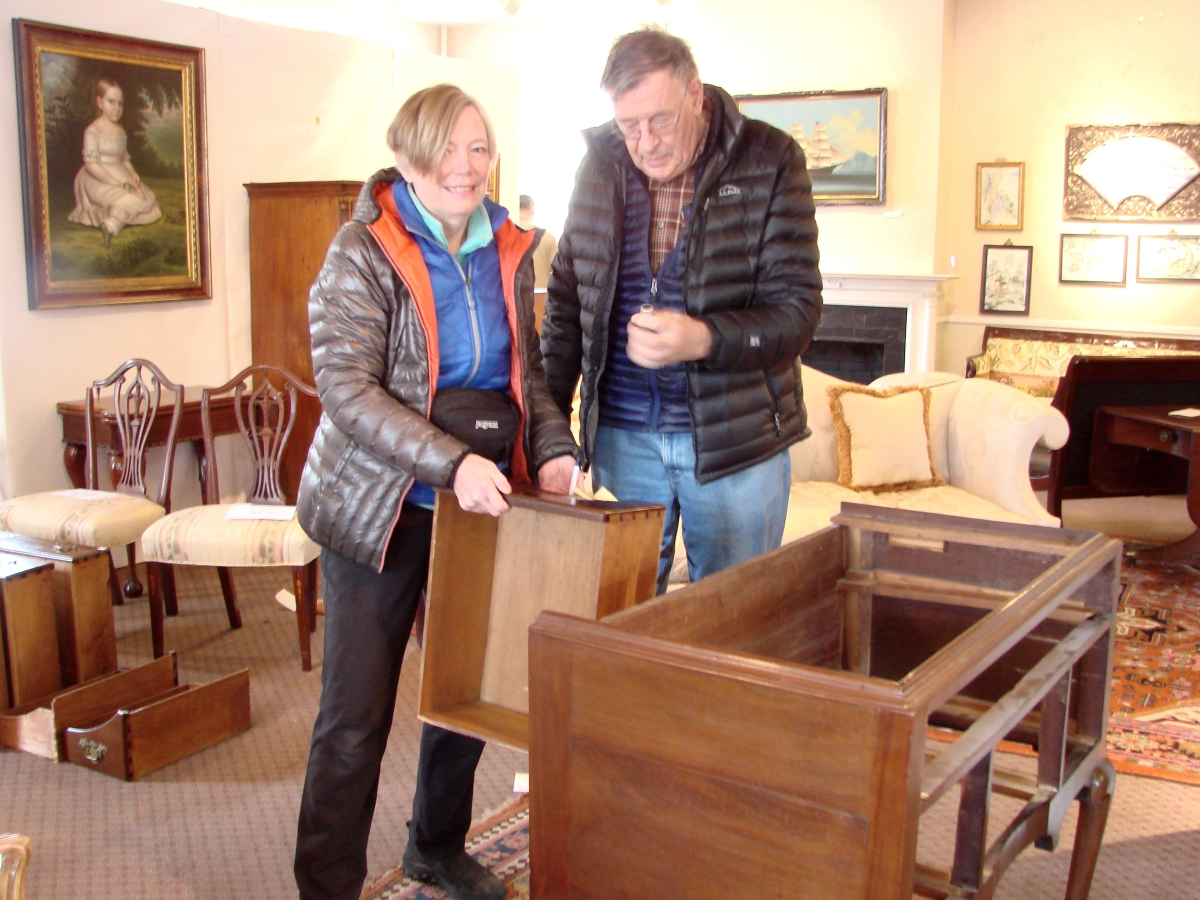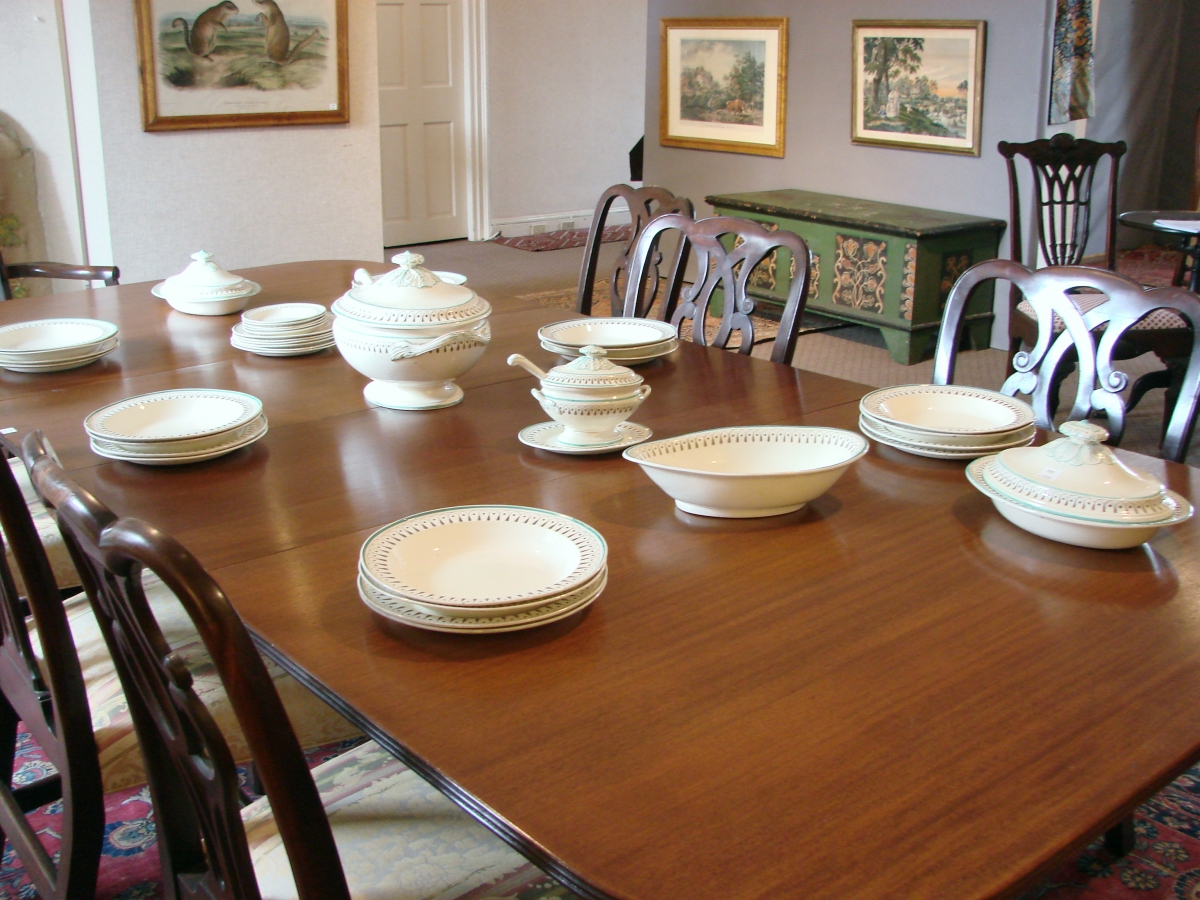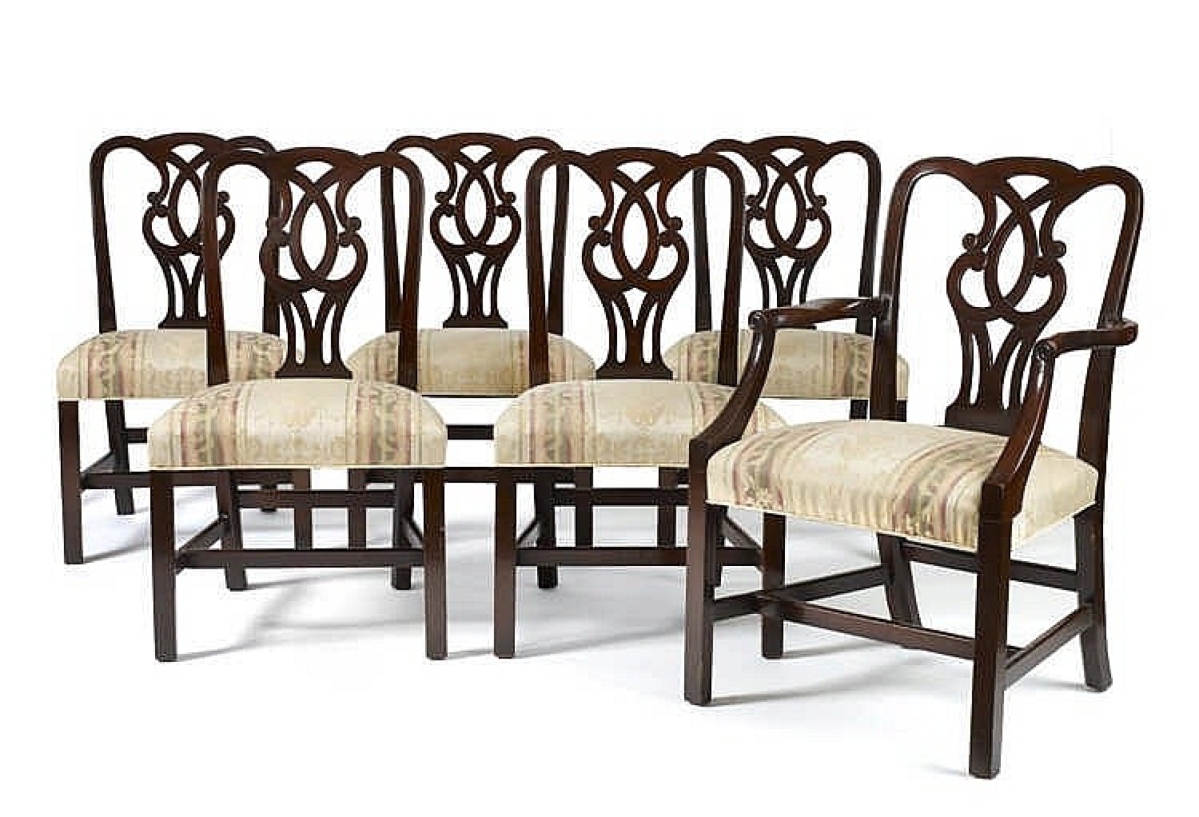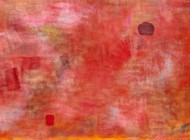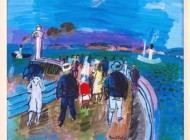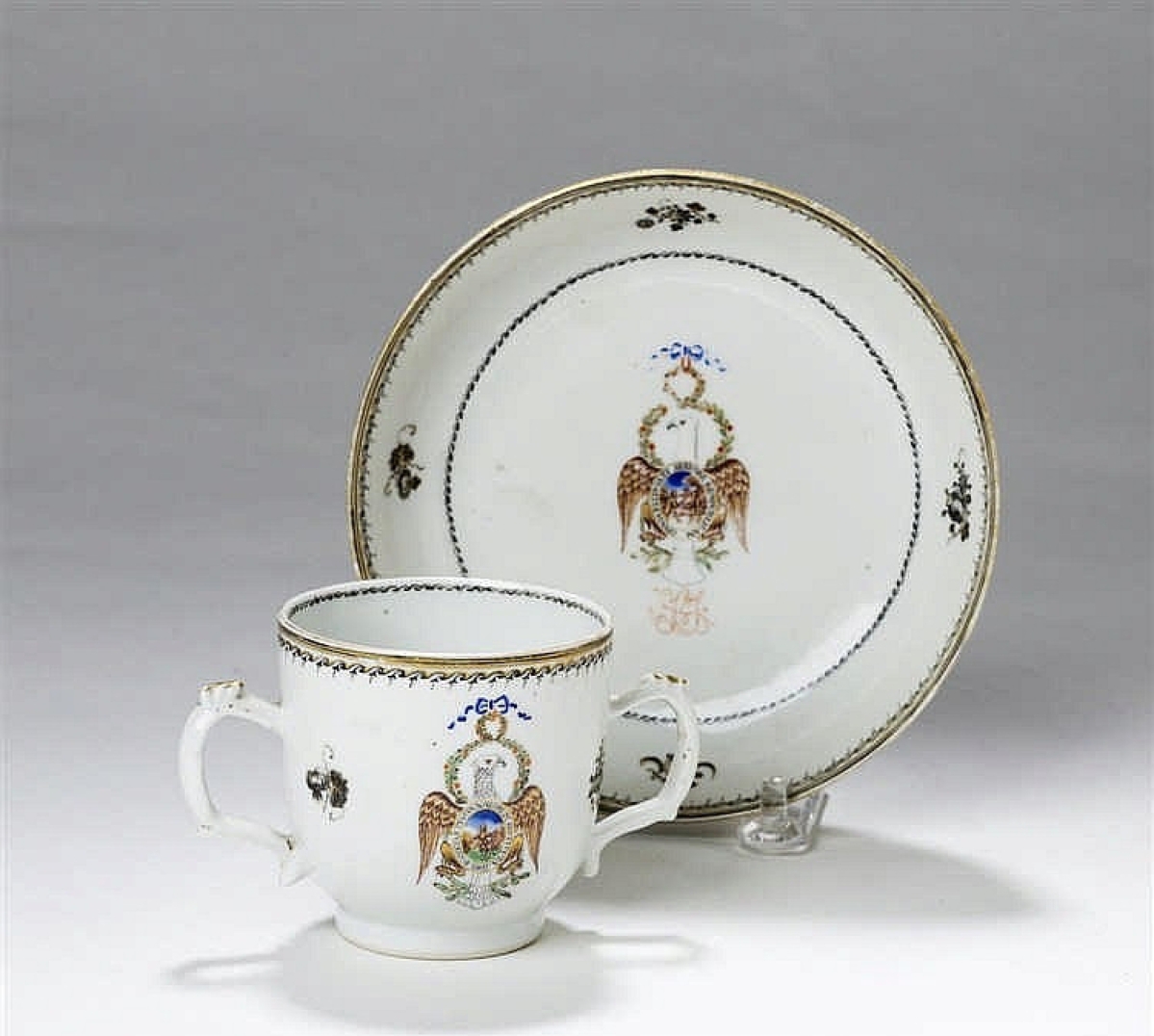
At $51,600, this two-handled cup and saucer with the insignia of the Order of the Cincinnati was the highest priced item in the sale. It was part of a tea set that had belonged to, and had the initials of Samuel Shaw, one of the founders of the society. The form, according to the buyers, was quite rare.
Review and Onsite Photos by Rick Russack, Catalog Photos Courtesy Northeast Auctions
PORTSMOUTH, N.H. — Ron Bourgeault’s Northeast Auctions had a full house for its April 2 sale. The timing was fortuitous — the day before had seen the area blanketed by a heavy, early spring snowstorm.
An extremely rare Chinese export porcelain two-handled cup and saucer, with the insignia of the Society of the Cincinnati, led the sale. A very unusual Connecticut secretary topped the furniture offerings which also included a group of 11 Chippendale-style chairs, with different backs, that probably were cabinetmaker’s samples from the late Nineteenth Century. A group of Meissen figures started the day, and were followed by Chinese export porcelain, early clocks, a selection of Currier and Ives prints, silver, historical blue Staffordshire and other English ceramics, a Midwestern collection of early European brass candlesticks, and quite a bit more.
Bourgeault moved the sale along quickly, selling more than 400 lots in about four hours. The salesroom was full; there were numerous absentee bids, along with several active phone lines and internet bidding. The catalog descriptions were, when necessary, extensive. For example, the description of the cup and saucer was about one and a half pages long. The sale grossed $413,000, in line with its estimate.
Collectors from Pennsylvania bought the two-handled cup and saucer with the insignia of the Society of the Cincinnati, paying $51,600. They had come specifically for it and left shortly after it was sold. The cup and saucer were from a tea service ordered about 1790 by Samuel Shaw, who, along with General Henry Knox, was one of the founders of the society. During the Revolutionary War, Shaw was a captain and aide-de-camp to Knox. In May 1783, they formed the society; the membership of which was to include commissioned officers who had served in the Continental army or navy during the war.
Later, in 1784, Shaw sailed on the Empress of China, the first American ship to sail to China, opening trade with that country. On that voyage, he ordered a set of dinnerware to be decorated with “something emblematic of the institution,” meaning the Society. That set eventually was owned by George Washington and only a few pieces are in private hands. In about 1790, on another voyage, Shaw ordered a dinner set for himself and ten tea services, each of about 45 pieces, each piece decorated with a laurel wreath surrounding an eagle’s head, the insignia of the Society. He intended one tea set for himself and the others for officers from Massachusetts who had served in the war. Each piece of each set included the initials of the recipients and the cup and saucer Northeast sold bore Shaw’s initials. According to the buyers, the two-handled form is a rare form not included in most sets and very few are known today.
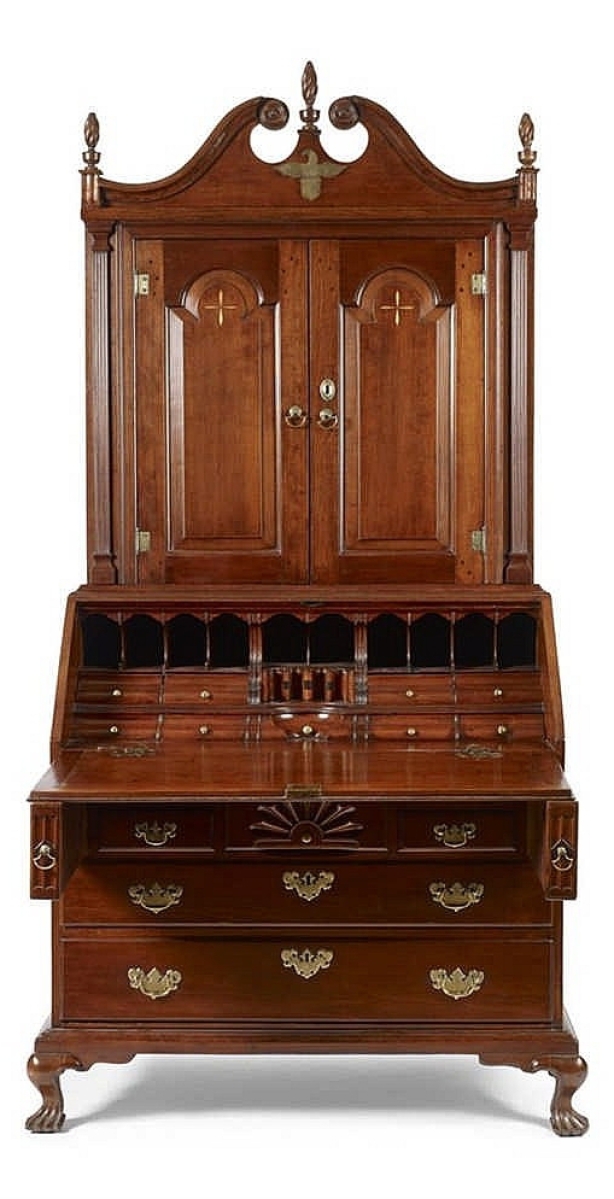
Illustrated in New London County Furniture, this Connecticut Queen Anne desk and bookcase had an unusual inlaid brass eagle under the scrollwork crest and exposed brass hinges. Its provenance included Israel Sack. It sold to Woodbury, Conn., dealers for their personal collection, and they paid $26,400. One of the buyers said he believes the piece was made by Elijah Booth, and was so identified in the book.
The buyers also said that it is believed that, in addition to the sets mentioned above, another seven or eight sets may have been ordered for other members of the society, but the exact number is open to conjecture. Since most were tea sets, serving pieces are extremely rare. Winterthur and the Anderson House, now the headquarters of the society, have substantial collections.
Other armorial porcelain pieces also did well. A pair of circa 1820 7-5/8-inch plates with the Great Seal of the United States, done in sepia, black and gold, reached $3,840, and a circa 1800 7¾-inch plate from the Commander John Stephen Decatur service went for $1,140. That plate was painted in sepia and gold with a view of figures aboard a three-masted ship. The selection of Chinese export pieces included two unusual “sample border” cans and saucers, both dating 1790–1810. Each set had four different border panels, of four different colors. Chinese merchants used sample wares such as these during the late Eighteenth and early Nineteenth Centuries to show potential clients the range that could be used for individual orders. One set sold for $1,560, and the other brought $2,280.
The sale included about 20 Chinese export porcelain famille rose plaques from the late Republic period, which extended from the Xinhai Revolution in 1912 to the 1949 overthrow of the government by the Chinese communists. Josh Chamberlain of Chamberlain Antiques, Amherst, N.H., bought several of them. Chamberlain said after the sale that there is increasing interest in objects made during the Republic period and nearly all of the collectors reside in China. He noted the price range, $480 to $7,440, reflected the fact that some of the pieces were signed while others were not, and that some of the signed ones were done by popular artists. The material was fresh to the market, which also added to their desirability, and most sold over estimates. Chamberlain said that the plaque, which sold for $7,440, while signed, was of interest more because of the subject matter — several sika deer in a meadow are being watched by a monkey in a tree — than the artist. He also bought a late Nineteenth Century embroidered dragon robe that went to $6,600, also well over estimate, owing to its fine condition.
A very interesting, well carved, Connecticut Queen Anne cherry desk and bookcase realized $24,600. Below the central flame finial of the scrollwork crest was an inlaid brass eagle, and the brass hinges of the bookcase doors were exposed. Its provenance included Israel Sack and the Marvin collection, sold at Sotheby’s Parke-Bernet in 1978. It was also exhibited at the Litchfield Historical Society in 1969 and is pictured in the catalog of that exhibition, “Litchfield County Furniture.” It was bought by Ryan Fox and J.R. Cordrey, Stiles House Antiques, Woodbury, Conn.
Fox told Antiques and The Arts Weekly that they bought it for their personal collection, and, although not cataloged as such, the piece has been attributed to Elijah Booth, who worked in Litchfield County. Fox said that although some of the construction details differ from other pieces attributed to Booth, this piece has been attributed to Booth “for decades. We’re delighted to have been able to bring it home.”
A Queen Anne carved mahogany bonnet-top highboy that had descended in the Quincy family went for $13,800, and a Massachusetts Chippendale mahogany blockfront chest of drawers brought $10,800. Four phone bidders competed for it. A very interesting group of 12 well-made centennial period Chippendale-style carved mahogany dining chairs finished at $1,320. The lot comprises five pairs of side chairs, and two additional chairs. Bourgeault believed that the chairs might have been samples in a Philadelphia cabinetmaker’s shop at the time of the centennial, allowing customers to select the style they would like to order. Another set of 11 Chippendale-style dining chairs was sold to benefit the Animal Rescue League. It brought $5,040.
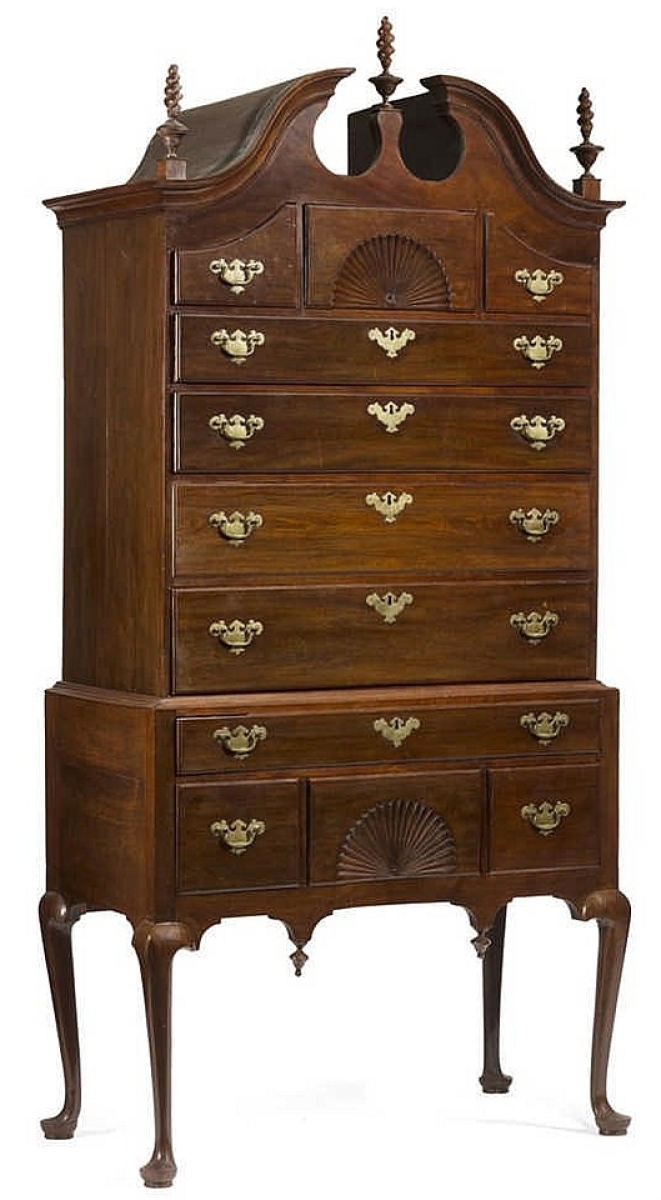
Known as the Quincy family highboy, this Massachusetts Queen Anne carved mahogany piece had been inherited by Josiah Quincy. It was accompanied by a genealogical chart which indicated that it came from “the old house.” Among other career highlights, Quincy was president of Harvard from 1829 to 1845. The highboy sold to a phone bidder for $13,800.
The sale started out with a selection of Meissen and Royal Dux figures, along with some Royal Vienna portrait plaques, a pair of which brought $4,800, eight times its estimate. They were signed Johner and depicted Sommer and Madame Recamier. Each was on a blue ground and surrounded by additional portrait miniatures. The catalog dated them to the late Nineteenth or early Twentieth Centuries. European porcelains were followed by several lots of silver, including a tea strainer on stand made by Georg Jensen in the Cosmos pattern, circa 1915–27, which earned $1,320. A collector had a passion for spoons in the Sheaf of Wheat pattern, and there were several in the sale. They were sold in small lots, organized either by maker or state. Six tablespoons by Joseph T. Rice, Albany, N.Y., finished at $240, and six teaspoons by Ayers & Beard, Louisville, Ky., attained $180.
Two giltwood and eglomise Massachusetts clocks led the clock selection. An unmarked banjo clock, with a brass eagle finial and a tablet depicting a woman reading and a small child with a dog, earned $5,040. A shelf clock by Boston maker John Sawin, with a turned acorn finial, and a tablet depicting a girl with potted plants and a cat, finished at $3,840.
Recent Northeast sales have included several Currier and Ives prints. Topping the group in this sale was a well-framed, hand colored, large folio print “Autumn in New England Cider Making.” It was published in 1886, based on a painting by George Durrie and was listed in two editions of the Best Fifty Large Folios list of Currier and Ives prints. It realized $4,080. A small folio print that Bourgeault said he had never seen before, “Star of the Road,” may have been a good buy at $360. It depicted two white horses pulling a small carriage with a well-dressed woman and a house and trees in the background. It was one of several small folio prints in the sale that had been listed in the original list of the “Best Fifty Small Folio” prints.
Toward the end of the sale there were more than 15 lots of early European brass candlesticks from a Midwestern collection. A pair of candlesticks cataloged as Northwest European Gothic candlesticks, mid-Fourteenth Century, reached $1,200. A lot of three large pricket candlesticks with molded knobs and bases, two of which matched, earned $2,850. The sale concluded with about 50 lots of historical blue Staffordshire. Leading the group, at $1,920, was a 19-inch medium blue platter in the State House Boston pattern. There were two dark blue pepper pots, each depicting the Landing of General Lafayette at Castle Garden. Each was 4½ inches tall and each brought $1,200.
After the sale, Ron Bourgeault, who was selling at more than 100 lots an hour, said the sale went well. “We hit the number that I thought we would, with the gross coming in at $413,000. I was pleasantly surprised with the Samuel Shaw cup and saucer. We had to take a lot of stuff from that house in order to get that cup and saucer, but I’m glad we did. Nearly everything came directly out of houses, so it was all fresh material. But there’s no rest — we’re working on the next one.”
All prices reported include the buyer’s premium. For more information, 603-433-8400 or www.northeastauctions.com.

